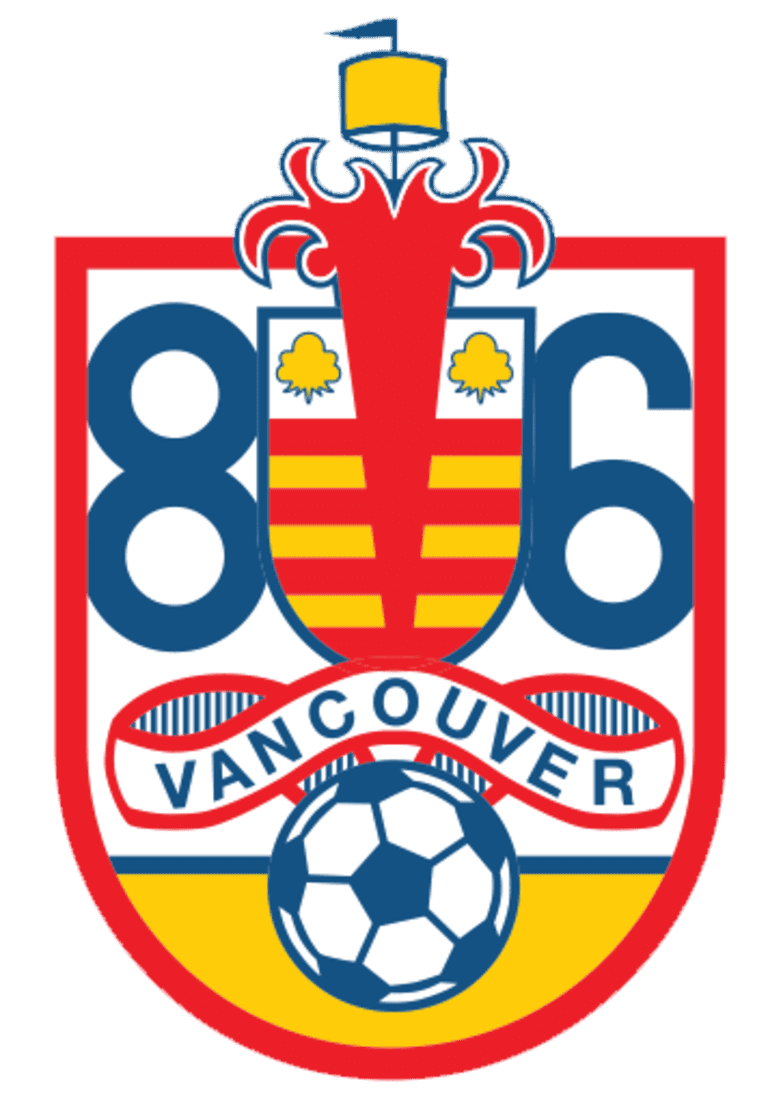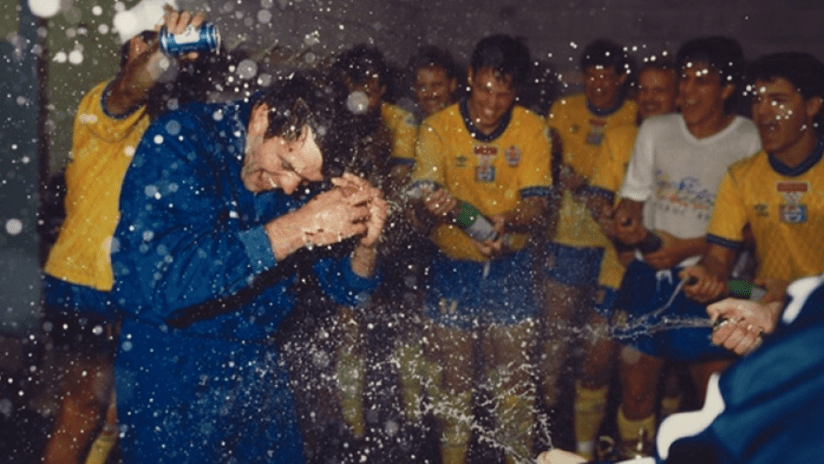30 years.
That’s how long it’s been since the Vancouver 86ers were born, kicking off an important era in the history of the club. And to celebrate the occasion, alumni of the 86ers will descend upon BC Place on Saturday afternoon to take part in a charity alumni match vs. a Whitecaps FC alumni team that features the likes of Jay DeMerit, Robert Earnshaw, Young Pyo-Lee, and Andy O’Brien.
But who exactly were the 86ers? Let’s take a closer look.
THE 86ERS ARE FORMED
The demise of the North American Soccer League (NASL) in 1984 resulted in the formation of a new league, the Canadian Soccer League (CSL), in 1986. And with that, Vancouver returned to the professional soccer scene with the birth of the 86ers.
Like the Whitecaps before them, the team needed an identity, one that was both fitting of its origins and emblematic of the great city in which it represented. Former Soccer Bowl winning Whitecaps head coach Tony Waiters was among the group that started the new team.
“We were initially going to call the team Vancouver United, but we felt that it was too British,” Waiters told whitecapsfc.com in 2010.
They eventually settled on a name that held a great deal of meaning: Vancouver 86ers. The group, which also included Whitecaps FC president Bob Lenarduzzi, realized the impact that Expo ‘86 had on the city and the importance of Canada’s World Cup qualification that same year. They were also aware of the year the city was founded (1886), and the year the club was launched (1986).
However, one of the main reasons the name 86ers was chosen derived from the humble beginnings of the organization, who were driven by the love of the game.
“There were 86 of us, who initially invested our money to start up the club because we wanted to get professional soccer back in Vancouver,” Waiters said.
“They were just a bunch of average guys like me, who put up $500 for the seed money,” Lenarduzzi added in a story on MLSsoccer.com. “But I can remember even my own wife, and other people whose opinions I value saying, ‘What are you doing? And what are the rest of the people doing? It’s done, it’s finished, it’s over.”
It wasn’t.
THE LOOK

Lenarduzzi and company did not look far for inspiration in developing the original club logo.
They modelled the 86ers shield after Vancouver's coat of arms, which had been adopted in 1969. It had the same basic design, but with several changes and less detail.
Rather than having a logger and a fisherman on either side of the crest, the logo had an '8' and a '6', and in place of the city’s motto 'By Sea Land and Air We Prosper', it simply had 'Vancouver' with a soccer ball underneath. The founding group decided to use red, yellow, blue and white for the logo since those were the colours of British Columbia's provincial flag.
The main uniform colours were also yellow and blue.
DYNASTY IN THE MAKING
On June 7, 1987, the 86ers took to the pitch for the first time, thrilling a home crowd of 7,646 with a 4-2 victory over Edmonton Brickmen. Carl Valentine scored the team’s first-ever goal.
“Before our first game, there was a big front page story on the sportspage with a massive, half-page picture of Carl and his return,” said Lenarduzzi, who served the dual role as player/coach. “We ended up selling out Swangard with over 7,000 fans and it had a lot to do with Carl’s popularity.”
The team ended the regular season in second place in the CSL's Western Division before having their season ended by the inaugural league champions Calgary Kickers in the playoff semifinals. The playoff loss in their first year turned out to be an aberration, as the 86ers became, arguably, the greatest dynasty in Canadian club soccer history in the years that followed.
From 1988-1991, the 86ers established themselves as a powerhouse, winning four-straight league championship titles. The club also set a North American professional sports record by playing 46 consecutive matches without defeat (37 wins and nine draws). For this accomplishment, the 86ers squad of 1989 was inducted into the BC Sports Hall of Fame and Museum.
On October 26, 2000, after widespread public support, the 86ers formally changed their name back to the Whitecaps after their new owner, David Stadnyk, purchased the naming rights from former NASL Whitecaps director John Laxton.
A STAR IS BORN
Fittingly, the rebirth of professional soccer in Vancouver in 1986 coincided with the emergence of Domenic Mobilio. The Vancouver-born striker joined the inaugural 86ers as an 18-year-old – he was one of the first two players to sign – and scored in their first-ever game.
From there, Mobilio never looked back.
He spent 15 seasons in Vancouver and established himself as the most prolific goalscorer this city has ever seen. His 170 goals for the club are more than double the next player. That total, which still ranks second in the all-time North American scoring charts, also makes Mobilio the all-time leading scorer in Canadian Soccer League history.
“He was left-footed, which always looks a little more stylish, and he held the ball up well,” said Valentine, a fellow Ring of Honour inductee. “But what you could say about Domenic is when he was around the penalty area he very, very rarely tried to hit the ball very hard. He was very calm, the game seemed to slow down for him, and there weren’t many chances he didn’t finish.”
Mobilio tragically passed away from a sudden heart attack at the age of 35. Today, Whitecaps FC’s leading goalscorer is awarded the “Domenic Mobilio Golden Boot Award.”
Saturday’s alumni match will take place from 1:45 to 2:45 p.m. PT. at BC Place – prior to the MLS match against Colorado Rapids set to kick off at 4 p.m. PT. Tickets are available for purchase for $5, with all proceeds donated to BC Children’s Hospital. To purchase a ticket for the alumni match, fans must also have or purchase a ticket for the MLS match. Season ticket members and fans who already have a ticket for the MLS match can purchase tickets online HERE. Fans who do not yet have a ticket for the MLS match and would like to attend both matches can purchase tickets online HERE.


